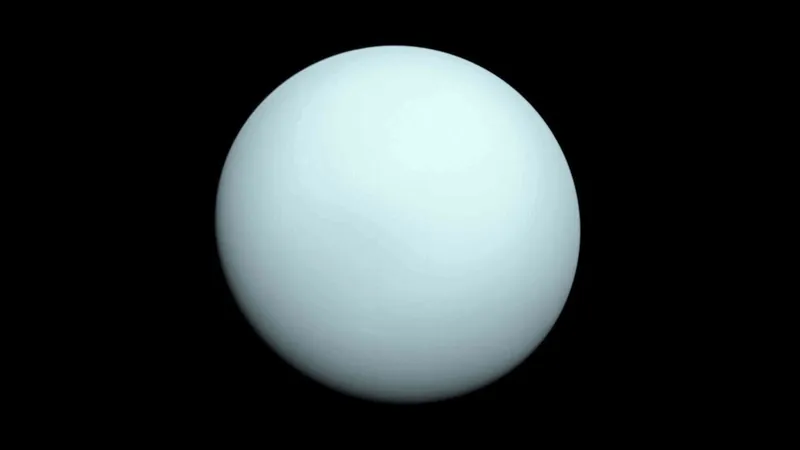
Revolutionizing Mineral Analysis: Meet MIST, the Game-Changing Algorithm!
2025-08-28
Author: Liam
Introducing MIST: The Future of Mineral Identification!
Scientists have just unveiled MIST, a groundbreaking algorithm designed to accelerate the process of identifying minerals from chemical data! This innovative tool is set to revolutionize the exploration and mining industries by automating what has traditionally been a slow and expert-dependent process.
What is MIST?
MIST, which stands for Mineral Identification by Stoichiometry, is a computational marvel introduced in the latest issue of *Computers & Geosciences*. Unlike manual methods like petrography and spectroscopy that take ages, MIST offers a swift and standardized approach to handle extensive datasets generated during mineral exploration.
A Major Breakthrough for Geoscience!
Developed by a team of scientists from Rice University's Department of Earth, Environmental and Planetary Sciences, MIST is a significant stride in geoscience data analysis. It leverages machine learning to ensure high-quality, consistent data—a crucial element for accurate mineral classification.
From Mars to Earth: A Versatile Tool!
Interestingly, MIST was initially crafted to interpret Martian minerals, but its utility now spans Earth’s geological landscape as well. According to Kirsten Siebach, lead author and assistant professor at Rice, "MIST turns a complex, expert-heavy task into a simple process that can identify minerals instantly based solely on their chemistry." This capability is a game changer!
Why MIST Matters in Mining!
Accurate mineral identification is vital for efficient resource extraction and quantification in mining. Traditional techniques, while precise, are too slow for large deposits or early exploration stages. MIST simplifies this by transforming raw compositional data into reliable mineral classifications in no time.
How Does MIST Work?
MIST analyzes oxide percentages and normalizes data against established mineral formulas, accommodating natural elemental substitutions. Its robust framework efficiently filters out low-quality data and accurately identifies minerals, integrating seamlessly with existing geochemical workflows.
Impact on Geological Databases!
Applied to extensive databases like GEOROC, MIST has successfully identified over 200 mineral species from more than 875,000 samples, offering standardized formulas and quality checks. It's already showcasing its prowess in identifying important minerals such as clinopyroxenes and feldspars.
Enhancing Data Reliability and Mining Efficiency!
MIST enhances the reliability of mineral databases and offers cleaner data for machine learning applications. Although it has some limitations, like narrow classifications for specific minerals, it represents an essential advancement in large-scale mineral identification.
The Future of Data-Driven Mining!
With MIST's ability to quickly filter and standardize vast mineral records, it's paving the way for data-driven mining practices. Faster interpretation of geochemical data is crucial during early exploration phases, leading to prompt decision-making and improved quality control.
In Conclusion: A Promising Utility!
MIST not only complements traditional mineral identification methods but also provides a rapid first-pass classification that can guide more detailed studies. As it evolves and adopts new mineral species, it promises to keep pace with advancements in the mining industry, ultimately supporting sustainable resource development.









 Brasil (PT)
Brasil (PT)
 Canada (EN)
Canada (EN)
 Chile (ES)
Chile (ES)
 Česko (CS)
Česko (CS)
 대한민국 (KO)
대한민국 (KO)
 España (ES)
España (ES)
 France (FR)
France (FR)
 Hong Kong (EN)
Hong Kong (EN)
 Italia (IT)
Italia (IT)
 日本 (JA)
日本 (JA)
 Magyarország (HU)
Magyarország (HU)
 Norge (NO)
Norge (NO)
 Polska (PL)
Polska (PL)
 Schweiz (DE)
Schweiz (DE)
 Singapore (EN)
Singapore (EN)
 Sverige (SV)
Sverige (SV)
 Suomi (FI)
Suomi (FI)
 Türkiye (TR)
Türkiye (TR)
 الإمارات العربية المتحدة (AR)
الإمارات العربية المتحدة (AR)